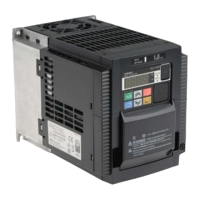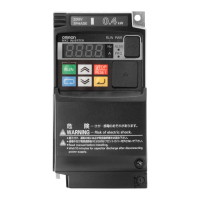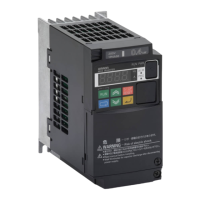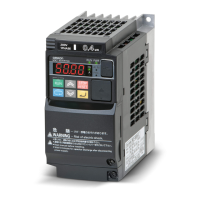The inverter tests for input over-voltage after
the inverter has been in Stop Mode for 100 seconds.
If an over-voltage condition exists, the
inverter enters a fault state. After the fault is
cleared, the inverter can enter Run Mode again.
When the inverter internal temperature is above
the threshold, the thermal sensor in the inverter
module detects the excessive temperature of
the power devices and trips, turning the inverter
output OFF.
When communication between two CPU fails,
inverter trips and displays the error code.
The inverter will trip if the power supply establishment
is not recognized because of a malfunction
due to noise or damage to the main
circuit element.
If instantaneous overcurrent occurs the Inverter
will shut off IGBT’s output to protect the main
circuit element. After tripping due this protective
function the inverter cannot retry the operation.
When a thermistor is connected to terminals [5]
and [L] and the inverter has sensed the temperature
is too high, the inverter trips and turns
OFF the output.
When “01” has been specified for the Brake
Control Selection (b120), the inverter will trip if
it cannot receive the braking confirmation signal
within the Brake Wait Time for Confirmation
(b124) after the output of the brake release signal.
Or when the output current doesn't reach
the brake release current (b126) during the
brake wait time for release (b121)
Safe stop signal is given.
Low-speed
overload protection
If overload occurs during the motor operation at
a very low speed, the inverter will detect the
overload and shut off the inverter output.

